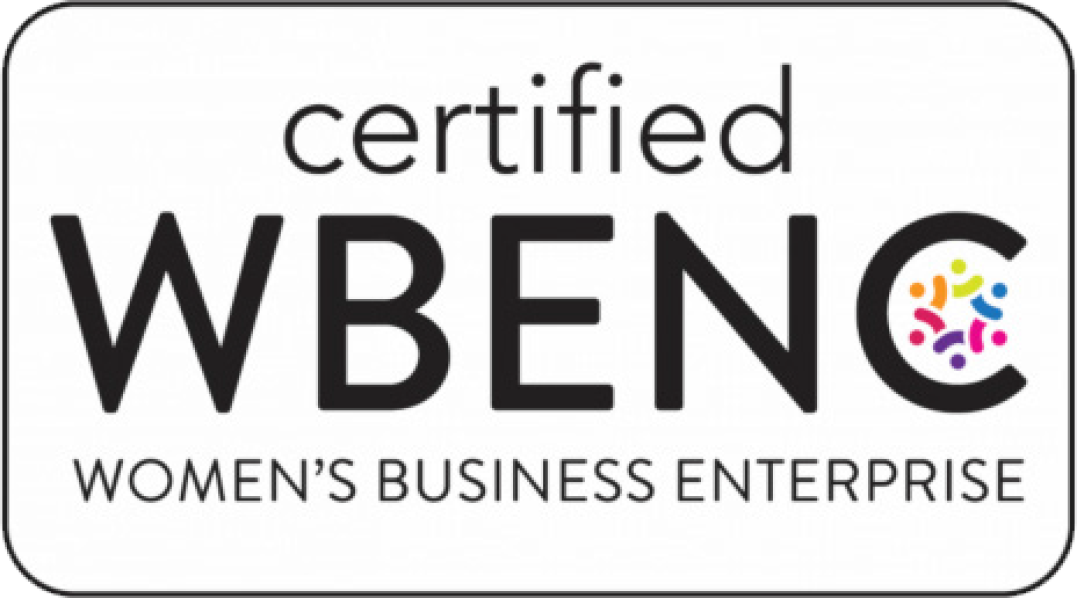We’ve come out the other side of what has felt like a two-year tornado, and we’re not in Kansas anymore. Many of us are also not fully back in the office. Instead, we’re in this weird, wacky land of in-between: The Kingdom of Hybrid.
Here in this in-between space, important communications tend to slip through the cracks, and employees wander the streets disinterested, confused and unsure about how things work now. But hope is not lost! For it has been foretold that an agency with a roadmap will lead the Kingdom of Hybrid into a new Age of Employee Engagement. (Spoiler Alert: It’s us. We have the roadmap.)
Do you desire to look upon its secrets yourself? Then read on!
Step 1: Start With Your WHY
Your journey to the Age of Employee Engagement begins here, with your why. People are drawn to leaders and organizations who are great at communicating what they believe. In the Land of Hybrid, this is especially important. Your why unites your entire organization, whether your team members are in one central office or scattered across the globe.
If you want to capture the hearts and minds of your employees, start with these steps:
Brand your communication campaign
A campaign line, tagline or other unifying phrase can connect every communication back to your company’s purpose and values — your why.
Partner with a communications professional
Equip them with your brand guidelines. Let them know where you’d like to be. The best writers can ensure that your why works in harmony with your style, tone and voice.
Be transparent
When communicating for engagement, there’s another why to consider – the why behind your decisions. Always be transparent with your audience, even if it’s icky. Speaking the truth goes a long way toward not only building trust, but heading off rumors and misinformation.
Step 2: Create a Communications Plan
With your why in hand, it’s now time to create a plan for communicating it. It will need to be robust, because your employees will need to see any new messaging more than once, and in different familiar places, to absorb it.
Here are a few tips for creating a plan that works.
Choose channels that make sense
Find out where your audience most readily consumes information related to your topic and meet them there. Keep in mind that these places may change from employee to employee. Those working from home won’t see the flyers you post in the break room.
Alter your tactics for each channel
Emails, videos, social posts, flyers…your message can have many different iterations. Make sure you choose tactics and writing styles that reflect how your audience already engages on any given channel.
Spread the word
Spread your messages across multiple channels and over time to give your audience plenty of opportunities to read, digest and understand what you’ve shared.
Step 3: Cater Your Message to Your Audience
Before you write any communications, you need to know exactly to whom you are speaking, because one message rarely fits all. Does your marketing team want to read communications that were written for your lawyers? (Trust us, they do NOT.) On a separate (but related) note, factors like geographic location and office vs. remote also need to be considered.
Ask your audience
The best communicators are also the best listeners. Uncover your audience’s specific needs and pain points, then address them in your messaging.
Start globally, edit locally
Create global resources for your regional and local leaders, then encourage them to tailor the messaging to their specific audience.
Speak their language
Messages for your board members should not read like messages for your frontline workers.
Step 4: Never Stop Communicating
Communicating regularly is key to maintaining an engaged hybrid workforce, but there’s a balance that must be struck. Too much communication and you risk becoming white noise. Too little, and you could be glossed over.
Don’t tip the scales
Too many messages may quickly sound like white noise to your audiences. Too few communications may leave them frustrated and confused.
Break down the silos
Plot out all upcoming communications across departments in one place. Use this information to spot gaps and redundancies.
Step 5: Measure. Learn. Fix. Repeat.
So how can you tell if your employees really are engaged? (Especially if you don’t see them face-to-face?) Engaged employees exhibit the same behaviors, no matter what business you’re in.
They’re emotionally committed to your organization
Engaged employees like the company they work for. They want to see it succeed.
They have an excellent attitude
Engaged employees may have off-days, but overall, they’re positive people. You can tell that they enjoy what they do.
They’re collaborative
Engaged employees like working with others. You don’t have to worry about whether they’ll pitch in on a project.
They go the extra mile
Engaged employees produce work that exceeds expectations. You won’t find them ducking their responsibilities.
They’re reliable and responsible
Engaged employees can be counted on to get the job done. They don’t need to be micromanaged.
They’re easy to work with
Engaged employees are usually not high maintenance. They don’t create (or promote) office drama.
Want more tips and tricks to make communication better for either yourself, your team or your entire organization? Sign up for our monthly newsletter!
We’ve come out the other side of what has felt like a two-year tornado, and we’re not in Kansas anymore. Many of us are also not fully back in the office. Instead, we’re in this weird, wacky land of in-between: The Kingdom of Hybrid.
Here in this in-between space, important communications tend to slip through the cracks, and employees wander the streets disinterested, confused and unsure about how things work now. But hope is not lost! For it has been foretold that an agency with a roadmap will lead the Kingdom of Hybrid into a new Age of Employee Engagement. (Spoiler Alert: It’s us. We have the roadmap.)
Do you desire to look upon its secrets yourself? Then read on!
Step 1: Start With Your WHY
Your journey to the Age of Employee Engagement begins here, with your why. People are drawn to leaders and organizations who are great at communicating what they believe. In the Land of Hybrid, this is especially important. Your why unites your entire organization, whether your team members are in one central office or scattered across the globe.
If you want to capture the hearts and minds of your employees, start with these steps:
Brand your communication campaign
A campaign line, tagline or other unifying phrase can connect every communication back to your company’s purpose and values — your why.
Partner with a communications professional
Equip them with your brand guidelines. Let them know where you’d like to be. The best writers can ensure that your why works in harmony with your style, tone and voice.
Be transparent
When communicating for engagement, there’s another why to consider – the why behind your decisions. Always be transparent with your audience, even if it’s icky. Speaking the truth goes a long way toward not only building trust, but heading off rumors and misinformation.
Step 2: Create a Communications Plan
With your why in hand, it’s now time to create a plan for communicating it. It will need to be robust, because your employees will need to see any new messaging more than once, and in different familiar places, to absorb it.
Here are a few tips for creating a plan that works.
Choose channels that make sense
Find out where your audience most readily consumes information related to your topic and meet them there. Keep in mind that these places may change from employee to employee. Those working from home won’t see the flyers you post in the break room.
Alter your tactics for each channel
Emails, videos, social posts, flyers…your message can have many different iterations. Make sure you choose tactics and writing styles that reflect how your audience already engages on any given channel.
Spread the word
Spread your messages across multiple channels and over time to give your audience plenty of opportunities to read, digest and understand what you’ve shared.
Step 3: Cater Your Message to Your Audience
Before you write any communications, you need to know exactly to whom you are speaking, because one message rarely fits all. Does your marketing team want to read communications that were written for your lawyers? (Trust us, they do NOT.) On a separate (but related) note, factors like geographic location and office vs. remote also need to be considered.
Ask your audience
The best communicators are also the best listeners. Uncover your audience’s specific needs and pain points, then address them in your messaging.
Start globally, edit locally
Create global resources for your regional and local leaders, then encourage them to tailor the messaging to their specific audience.
Speak their language
Messages for your board members should not read like messages for your frontline workers.
Step 4: Never Stop Communicating
Communicating regularly is key to maintaining an engaged hybrid workforce, but there’s a balance that must be struck. Too much communication and you risk becoming white noise. Too little, and you could be glossed over.
Don’t tip the scales
Too many messages may quickly sound like white noise to your audiences. Too few communications may leave them frustrated and confused.
Break down the silos
Plot out all upcoming communications across departments in one place. Use this information to spot gaps and redundancies.
Step 5: Measure. Learn. Fix. Repeat.
So how can you tell if your employees really are engaged? (Especially if you don’t see them face-to-face?) Engaged employees exhibit the same behaviors, no matter what business you’re in.
They’re emotionally committed to your organization
Engaged employees like the company they work for. They want to see it succeed.
They have an excellent attitude
Engaged employees may have off-days, but overall, they’re positive people. You can tell that they enjoy what they do.
They’re collaborative
Engaged employees like working with others. You don’t have to worry about whether they’ll pitch in on a project.
They go the extra mile
Engaged employees produce work that exceeds expectations. You won’t find them ducking their responsibilities.
They’re reliable and responsible
Engaged employees can be counted on to get the job done. They don’t need to be micromanaged.
They’re easy to work with
Engaged employees are usually not high maintenance. They don’t create (or promote) office drama.
Want more tips and tricks to make communication better for either yourself, your team or your entire organization? Sign up for our monthly newsletter!
 SUBSCRIBE TO
SUBSCRIBE TO
Three fresh ideas (and a meme)
Our monthly take on today’s marketing and communications topics… and a little fun, too.


